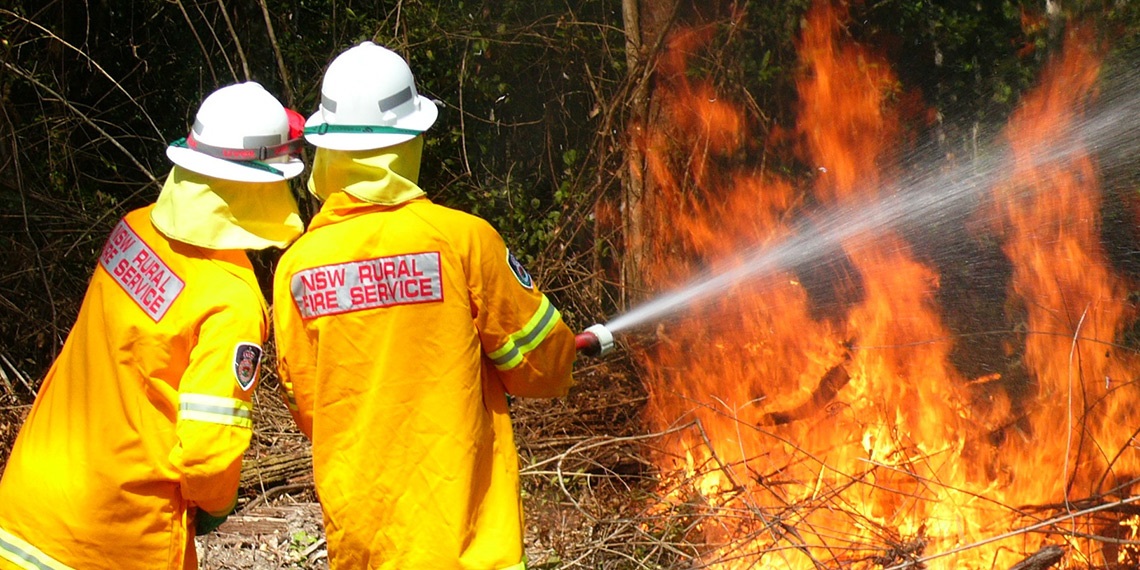Bushfire plans and policies

In Ku-ring-gai, we are fortunate to be surrounded by natural bushland. However, severe bushfire can threaten lives and cause damage to property and the environment. That’s why we have plans in place to ensure the community’s safety.
Prepare your home
Take the online Ready Check now and identify the risks at your house with our Climate Wise Communities program.
Listen to our experts as they present locally recorded videos on how to prepare your home and family for bushfire:
Watch sustainability webinars
Local support
The Hornsby Ku-ring-gai Bushfire Management Committee is responsible for coordinating bushfire planning in the local area.This includes:
To help minimise the risk of bushfire we:
- Maintain fire trails, walking tracks and fire breaks to provide firefighter access and defendable space.
- Conduct strategic hazard reduction burns to help manage fuel loads in our bushland reserves.
- Engage with and educate the community to help people increase their own resilience to bushfire (see Council’s Climate Wise Communities program for more information).
- Support the Ku-ring-gai and Killara Rural Fire Brigades and Ku-ring-gai State Emergency Service.
- Enforce controls on development in bushfire prone areas.
Bushfire risk management plans
Interactive bushfire risk management maps and treatment tables
Bushfire Management Policy(PDF, 435KB)
Development in bushfire prone areas
If you're seeking to build on land in a bushfire prone area, your development will need to comply with additional planning and building requirements. You will also need to submit additional documentation with your application. Read more on development in bushfire prone areas.
Community protection plans
Community Protection Plans (CPPs) are a tool to help residents better understand bushfire risk in their community and how best to prepare for it. Not all communities will have a CPP; they are developed by the NSW RFS in close co-operation with Council and those communities at particular risk of impact from bushfire. This includes, for example, communities which rely on only a single access road and are therefore at greater risk of becoming cut off in a bushfire emergency.
CPPs are designed to provide communities with relevant and easy to understand information about bushfire in their area, including:
- The level of bushfire threat to a community, such as a town or village.
- Options available to the community prior to and during the impact of bushfire.
- Access to the area, as well as ways people can leave in the event of a bushfire.
- Current and proposed works, such as community engagement and hazard reduction, to help deal with bushfire risk.
- Identifying important or 'at-risk' facilities such as schools, hospitals, nursing homes and child care centres.
Neighbourhood safer places
Neighbourhood Safer Places are places of last resort. They are open spaces or buildings that may provide protection from the immediate, life-threatening effects of bush fire, however, they are not evacuation centres and there is no guarantee that help will be available at these places.
Hazard reduction burns
We work with Fire and Rescue NSW, the NSW Rural Fire Service and the NSW National Parks and Wildlife Service to plan and carry out strategic hazard reduction burns. If you would like to conduct a hazard reduction burn on private property contact Council or the local Fire Control Centre. Past fire history including hazard reduction burns can be viewed on Council’s web map.
Planned burns
Timing of burns is dependent on weather conditions and cannot be scheduled far in advance. See NSW RFS website for up to date information on scheduled hazard reduction burns. Actual burn areas may differ slightly from those shown on proposal maps.
Fires on private property
Aside from a small list of exceptions, you are not permitted to burn anything on private property without prior written approval from the NSW Environmental Protection Authority. Some exceptions include burning small quantities of dry, seasoned wood or proprietary barbecue fuel for heating, cooking or recreational purposes, and burning under certain conditions for the purpose of bush fire hazard reduction. Burning some objects such as tyres and building materials is never permitted, and the lighting of fires is prohibited in all Council reserves.
If you wish to carry out burning on private property for the purpose of bush fire hazard reduction, you must do so in accordance with a Hazard Reduction Certificate and Fire Permit. Contact Council or the local Fire Control Centre for more information.
Alternatives to burning
Waste such as leaf litter, grass, weeds, small branches and hedge trimmings can be composted or placed in your green waste bin. For the disposal of larger branches, Ku-ring-gai Council offers a free mobile chipping service four times a year in February, May, August and November. For bushfire prone properties, Council also issues a special voucher for free disposal of green waste at Kimbriki Waste Management Centre. Contact Council on 9424 0000 for more information about any of these services.
Alternatively, green waste can be taken directly to your local waste management facility, and a number of private companies provide green waste collection services.
Climate Change Adaptation Strategy
Our Climate Change Strategy provides a management framework for Council to decrease its vulnerability and increase its resilience to the impacts of climate change. The Strategy also includes a continuation of the Climate Wise Communities program, which builds community resilience to the impacts of extreme events at a personal, property and neighbourhood level.
Our Climate Change Adaptation Implementation Plan provides a prioritised list of the climate change adaptations included in our Climate Change Adaptation Strategy, in response to bush fire, storms and flood, heat stress and drought.
View our Climate Change Adaptation Strategy(PDF, 2MB)
View our Climate Change Adaptation Implementation Plan(PDF, 245KB)
View our prioritised list of climate change adaptations(PDF, 223KB)
Research conducted by Council's Sustainability Program Leader, Dr Jennifer Scott.